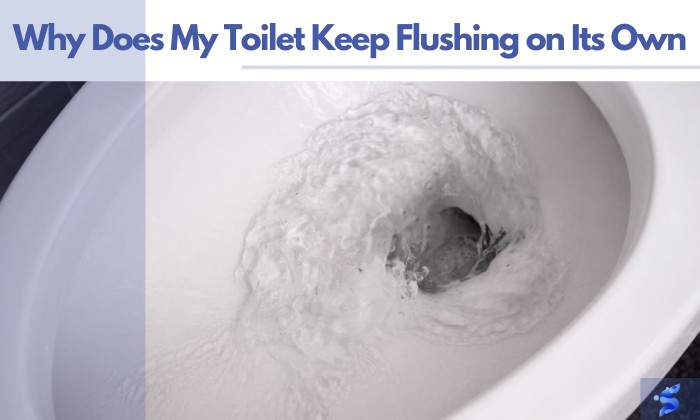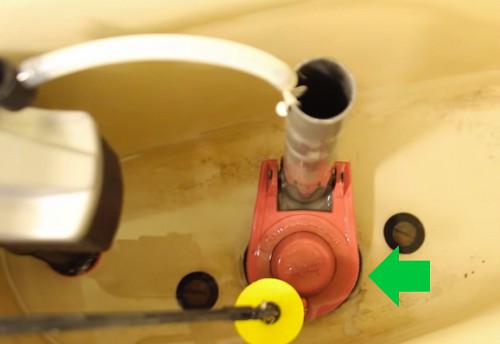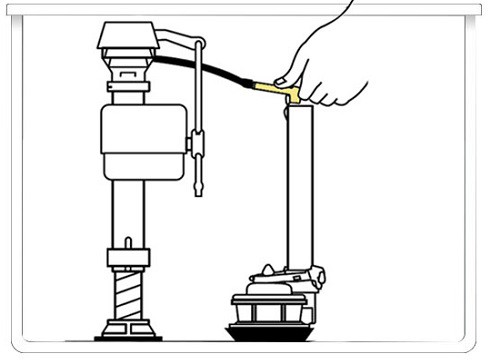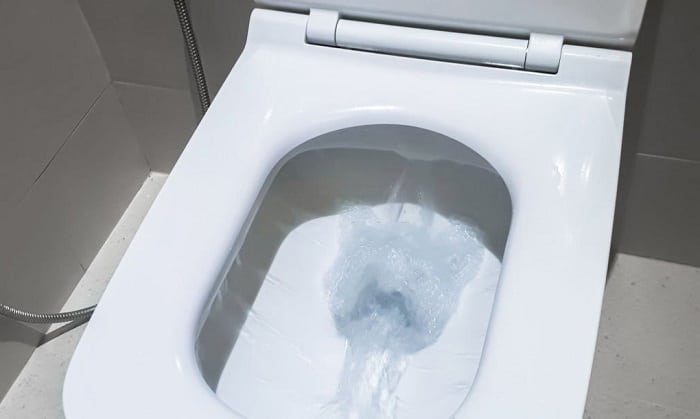If your toilet is continuously flushing, you’re wasting water and causing wear on your toilet components. Worse, it might overflow and flood your bathroom. So troublesome!
Ghost flushing in toilets can be caused by internal leaking from a broken flapper, refill tube, or flush valve, as well as external factors such as cracks in the bowl or tank and loose piping.
No need to keep wondering, “why does my toilet keep flushing on its own?” because we’ve got answers to help you troubleshoot. Read more.
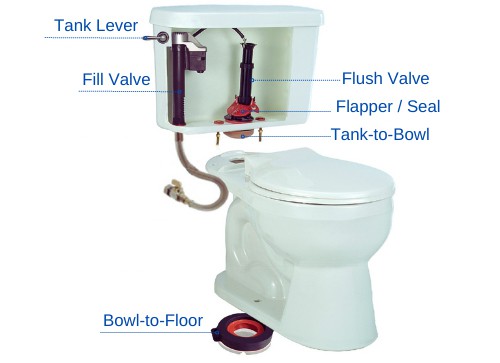
Table of Contents
Common Causes of Self-flushing Toilets
The first step to fix a toilet that flushes on its own is to identify what’s causing it, be it internal or external.
1. Internal Causes
- A broken flapper
The flapper is a rubber seal between the tank and the bowl. A broken flapper cannot create a proper seal, causing water to leak into the bowl. This can eventually lead to the toilet flushing on its own.
The issue is typically fixed after replacing the flapper, but if it persists, there might be an issue with the toilet handle that needs replacement.
- The refill tube pushed too low
The refill tube is a plastic tube that links the fill valve to the overflow pipe in the toilet tank. When the tank is empty, it enables water to flow to the overflow pipe from the fill valve.
If the refill tube is pushed too low, water from the tank continuously flows through the refill tube into the overflow pipe and, eventually, the toilet bowl. This constant flow of water triggers the toilet to flush repeatedly.
If the refill tube needs replacing, it’s best to call a plumber for help.
- Busted flush valve
The flush valve controls the water flowing from the tank to the bowl. It has a rubber seal, which, if damaged or worn, can lead to water leakage into the bowl.
The flush valve can get stuck in the open position when it is broken or malfunctioning. This creates a situation where the toilet’s internal system thinks the handle is continuously being pulled, causing a constant water flow from the tank to the bowl.
Since the flush valve is a single unit, an effective solution is to replace the entire flush valve to restore proper functioning and stop the so-called toilet phantom flush.
2. External Causes
- Cracks in the bowl or tank
Cracks in the toilet bowl or tank create openings that allow water to leak out.
If the leak is small, it may not be noticeable at first. However, over time, the leak can cause the water level in the tank to drop.
When the water level drops below the float, the float will activate the fill valve, which will refill the tank. When left unnoticed for too long, your toilet randomly flushes on its own.
If you see any cracks or leaks, have them repaired immediately.
- Loose piping connections
Similarly, loose piping connections can also lead to water leakage. Therefore, it’s another reason your toilet keeps flushing after a flush.
If there’s a gap between the pipes and the toilet, water can escape, causing a drop in the tank’s water level. As a result, the fill valve activates to replenish the water, leading to ghost flushing.
If you see any loose piping, tighten it or have it repaired.
What to Do: Diagnosing and Troubleshooting Tips
A toilet that flushes itself can be a nuisance, but fixing it would be simple and easy once you can identify the root cause.
Look for water around the base or in the bowl to check for internal leaks. You can also try to listen if the toilet is making a flushing sound when the toilet is not in use. If you find any signs of a leak, you should take steps to fix the leak as soon as possible.
Here are some tips to help prevent and fix internal leaks in your toilet:
- Regularly check the flapper for damage or wear and replace it as needed. Keep the flapper and the tank clean to ensure proper closing.
- Fix or replace the refill tube and flush valve if damaged or clogged.
- Adjust the float so that the water level in the tank is not too high.
To check for external leaks causing ghost flushing, visually inspect the toilet for cracks or damage. You can also conduct a dye test to check for silent leaks.
To avoid and fix external toilet leaks, here are some tips you can follow:
- Inspect regularly for cracks or signs of wear and tear. You should repair or replace it if necessary.
- Repair leaks immediately and secure loose piping.
Call a plumber for diagnosis and repairs if issues persist despite checking everything.
FAQs
How to replace a broken flapper?
To replace a broken toilet flapper, turn off the water supply to the toilet. Then, remove the flapper chain and the fill valve. Afterward, take out the old flapper and replace it with a new one. Finally, turn the water back on and check for leaks by flushing the toilet.
Conclusion
A toilet that flushes every few minutes is not haunted; the culprit is often a leak, either internal or external, that needs to be fixed.
By now, you know the answer to the question: why does my toilet keep flushing on its own? You have also uncovered tips to diagnose and troubleshoot a self-flushing toilet.
If you notice that your toilet is flushing on its own, you can’t keep ignoring it. Put your knowledge to the test and investigate the real cause behind it.
Time to become a ghost-flushing detective and fix the problem!

I’m Paulk Webb, and I work as a writer for Saveourwaterrebates. I’m happy to put in the time and effort to conduct market research to identify the most pressing issues faced by households concerning their plumbing. Feel free to check out our guides to get the most informed recommendations for how to solve your problems.


